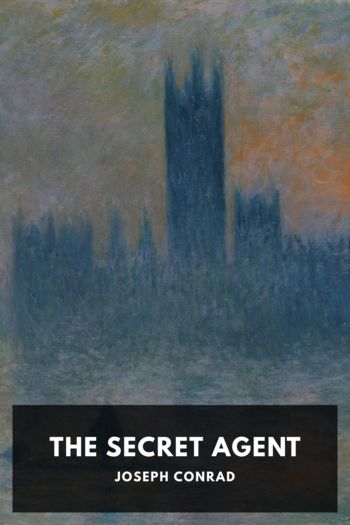Hidden History: Lost Civilizations, Secret Knowledge, and Ancient Mysteries Brian Haughton (an ebook reader .txt) 📖

- Author: Brian Haughton
Book online «Hidden History: Lost Civilizations, Secret Knowledge, and Ancient Mysteries Brian Haughton (an ebook reader .txt) 📖». Author Brian Haughton
But is the article anything other than a simple newspaper hoax, akin to that published in The Dallas Morning News, of April 19, 1897, telling of a UFO crash in Aurora, Texas? Many details of the 1909 article do suggest this. First of all, nobody has ever seen the photographs Kinkaid is alleged to have taken in the caverns or the artifacts he apparently retrieved. Surely, in more than 90 years someone would have seen them. Another problem is the lack of documentary evidence to back up the existence of either G.E. Kinkaid or Prof. S.A. Jordan. In addition, in the May 1909 article the Gazette refers to the Smithsonian as an Institute instead of an Institution (many Websites using the story have copied this error). It is surely fair to suggest that anyone employed by the Smithsonian would know the difference. A further error in the article is the statement that Kinkaid was "the first white child born in Idaho." In fact, this was Eliza Spalding, born at Lapwai on November 5, 1837, to Henry and Eliza Spalding.
Another interpretation is that the story of the Grand Canyon discoveries were inspired by Hopi Indian legends of ancestors who once lived in an underworld in the Grand Canyon. In fact, a description of this Hopi Indian tradition was appended to the original Gazette newspaper article. These legends could be partly responsible for the origin of the story, but there were other inspirations for the anonymous author at this time. In 1869, Major John Wesley Powell led the first successful expedition down the Colorado River and through the (then unknown) region of the Grand Canyon. Interestingly enough, when Powell came upon a huge river cave called Redwall Cavern; he stated that if it were used as a theater it "would give seating to 50,000 people" bringing to mind Kinkaid's estimate of 50,000 people being accomodated within the caverns.
The Brown-Stanton expedition of 1889 may also have provided some inspiration. This expedition was undertaken to survey a gorge in the Grand Canyon for possible railroad construction along the Colorado River into California. After three members of the expedition drowned in Marble Canyon, the remainder decided it was impossible to continue and attempted to make their way out of the canyon. They passed the spectacular springs of Vasey's Paradise and, after scaling the limestone wall above the river, discovered "a whole row of cliff dwellings, with pieces of broken pottery all over the cliff." Stanton decided to store the remaining supplies, and explore. He found a cave in the limestone rock face about 160 feet above the river (the Stanton's Cave mentioned previously).
From there they followed a prehistoric trail up South Canyon and to safety.
It also must be remembered that in the late 19th and early 20th century, stories about fantastic lost lands such as Atlantis, Lemuria, and Mu were rife. Kinkaid's supposed career also seems to be partly based on the explorer/antiquarian type of the era, exemplified in traveler, photographer, and amateur archaeologist Augustus Le Plongeon (1825-1908). The idea of the lost land of Mu first appears in the works of Le Plongeon. Born in Jersey, off the coast of Normandy, France, he led a colorful life, which included photographing Mayan ruins in the Yucatan Peninsula, working as a surveyor in San Fransisco, and studying photography in London. There were also great archaeological discoveries being made at this time, and their larger than life discoverers were often in the news. Examples include Heinrich Schliemann, who investigated the supposed site of Troy in northwest Turkey and the palace of Mycenae, Greece, in the 1870s. Other examples include the English Egyptologist, Flinders Petrie, who began excavating in Egypt in 1884, and Arthur Evans, who started work at the prehistoric palace complex of Knossos, on Crete, in 1900. Some, or all, could have provided part of the stimulus for the story.
It is in such accounts of the early explorers of the Grand Canyon, the intrepid archaeologists and antiquarians of the era, and in the Indian and Egyptian place names of the Grand Canyon, that the origins of G.E. Kinkaid and the 1909 newspaper article can be found, rather than in real discoveries inside a mysterious, lost cavern.
Hewgrange: Observatory, Temple, or Tomb?
© Government of Ireland
Aerial view ofNewgrange.
Brit na Boinne (Dwelling on the Boyne) is an area located on a hilltop overlooking a loop in the River Boyne, in County Meath, Ireland. It consists of various prehistoric archaeological sites, including a cemetery containing around 40 Passage Graves. A Passage Grave is a tomb, usually dating to the Neolithic period (c. 4000 B.c.-c. 2000 B.C.) where the burial chamber is reached along a low passage. The most well-known and impressive of the sites within the Bru na Boinne complex are
the passage graves of Newgrange, Knowth, and Dowth, of which Newgrange is perhaps the finest.
One of the greatest prehistoric monuments in the world, the huge Neolithic tomb of Newgrange (Si An Bhru in Irish-perhaps meaning fairy dwelling) was probably built around 5,100 years ago, making it more than 600 years older than the Great Pyramid of Giza in Egypt, and 1,000 years earlier than the Stonehenge trilithons. It is roughly circular, with a diameter of around 264 feet and covers an area of more than one acre. The mound of the monument was constructed from small stones layered with turf and is surrounded by 97 large stones known as kerbstones, some of which are elaborately ornamented with megalithic art. On top of the kerbstones is a





Comments (0)